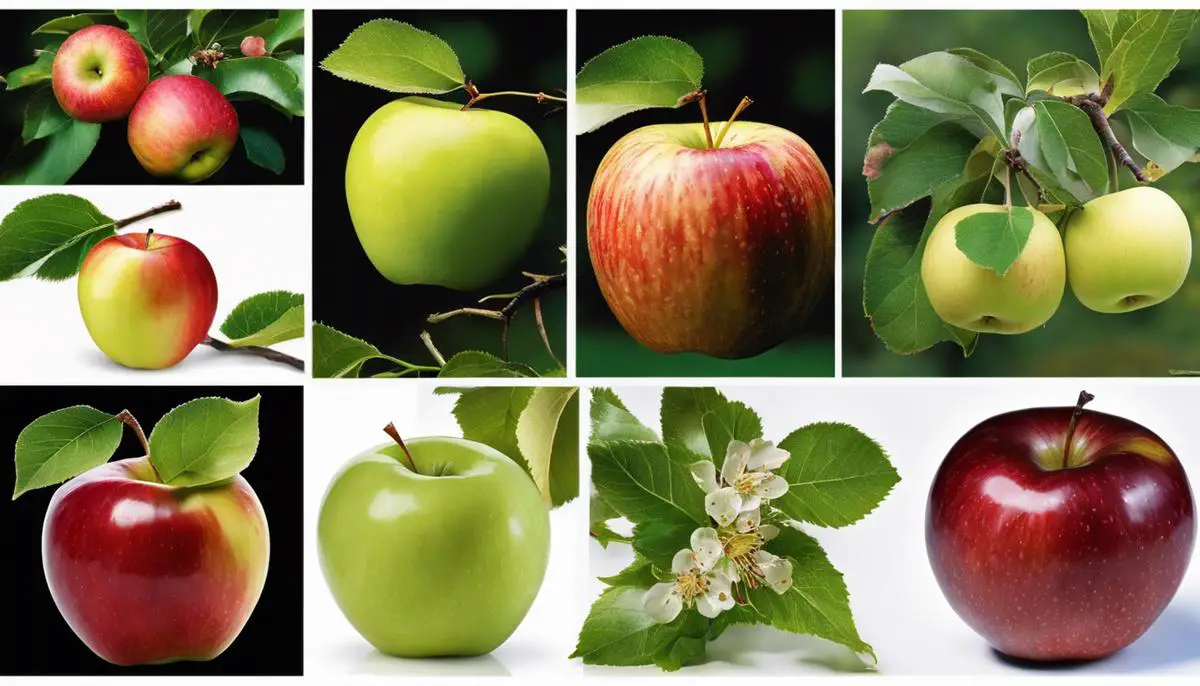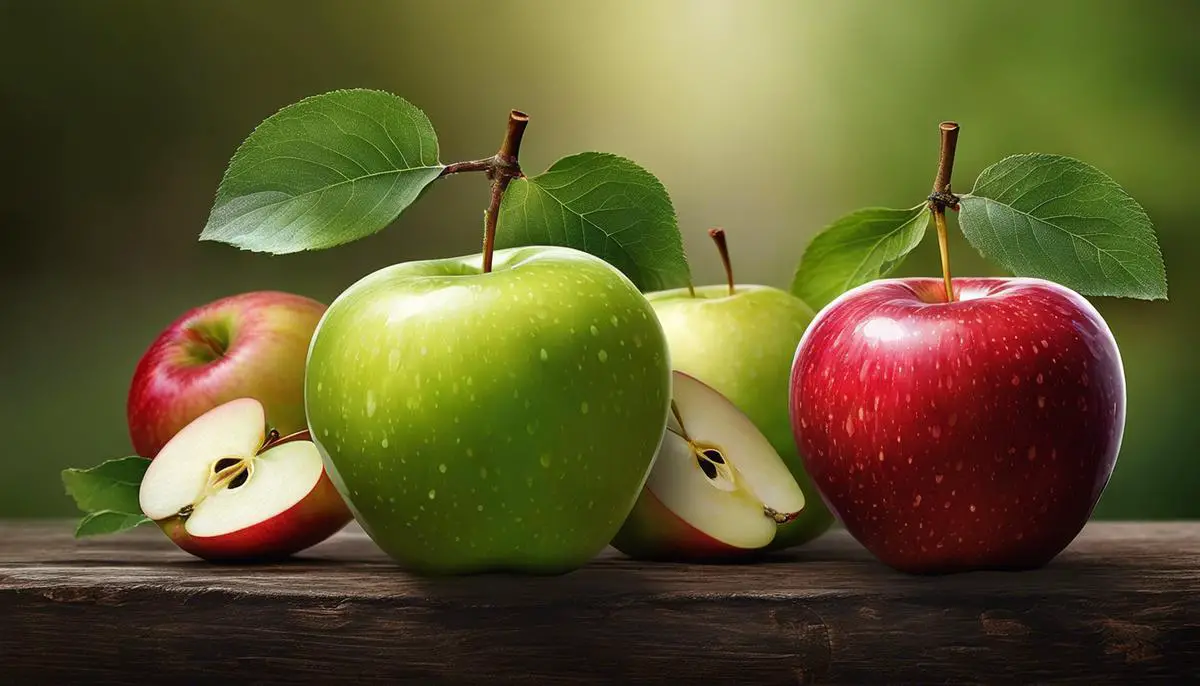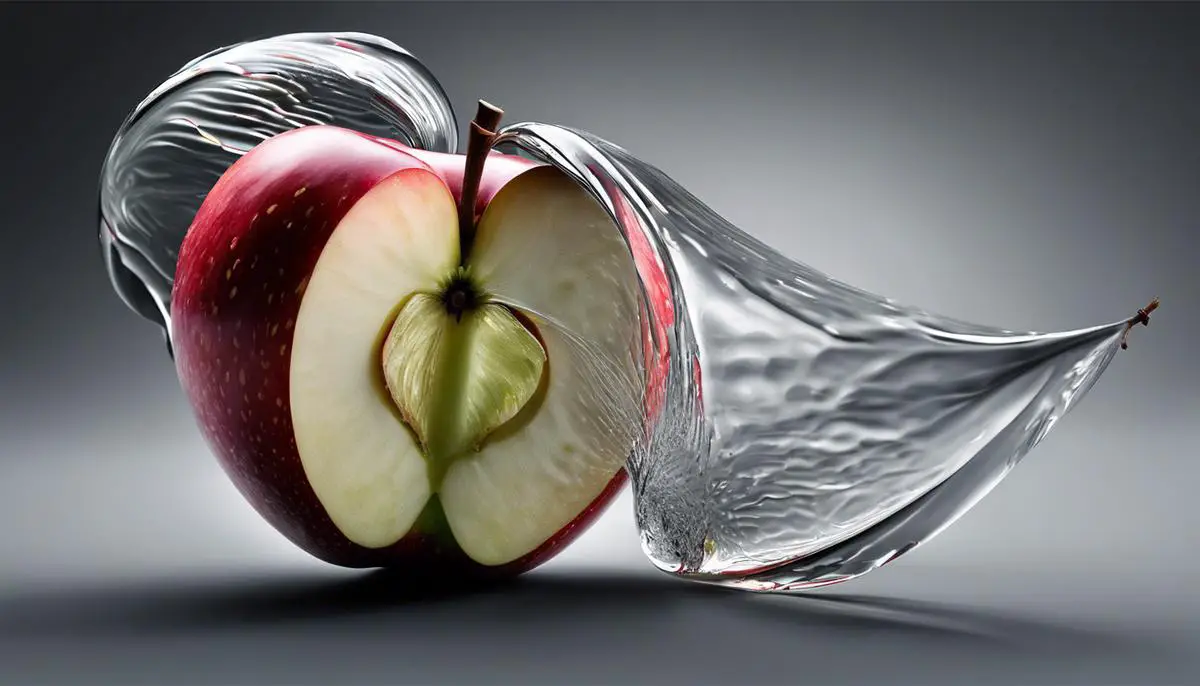Featuring prominently in our diet and culture, the humble apple is often viewed with a simplistic gaze. However, the journey an apple undertakes from blossom to fruit is surprisingly complex, bound by an intricate fusion of biology and environment. From the delicate transition of a tiny blossom into a fruit, to the cell division and expansion processes that shape its form, an apple’s development is truly a testament to nature’s wonder. Further in its journey, maturation and ripening phases crucially shape its texture, color, and ultimately its taste. Lastly, beyond these internal processes, external factors like climatic variability and cultivation practices wield a great influence in determining the apple’s final profile. In the following discussions, we delve into these fascinating stages of apple fruit development, aiming not only to appreciate this extraordinary fruit but to potentially enhance horticultural methods for improved yield and quality.
Understanding Apple Blossom to Fruit
The Transition from Blossom to Fruit: A Deep Dive into the Apple’s Developmental Mechanism
The fascinating journey of an apple, from a delicate blossom to a ripe, juicy fruit, is a remarkable, scientific phenomenon. In the heart of this complex process lie multiple physiological changes, making the apple not just an ordinary fruit, but a marvel of nature’s intricate mechanisms. This exploration underscores the biological and environmental factors that govern this transformation, providing insight into this masterpiece of nature’s artistry.
As in any developmental process, this journey begins with the fertilization of the apple blossom. Each individual flower on an apple tree has the potential to become a fruit, a promise that hinges on a crucial process, pollination. The role of bees becomes vital here, as they facilitate the transfer of pollen from the stamen (male reproductive organ) to the pistil (female reproductive organ). It’s a delicate balance, with the successful pollination leading the way for fertilization, marking the onset of fruit development.
Fertilization triggers a cascade of hormonal responses in the ovary of the flower. The plant hormone auxin is produced in significant amounts, empowering cellular growth by elongation. The crucial role of auxin, along with other growth hormones like gibberellins and cytokinins, is instrumental in fruit reach. The ovary begins to grow and develop, transforming into the apple’s main body, known as the pome.
Concurrently, physiological changes are governing not only the size but also the texture, color, and aroma of the developing apple. The maturation process involves the conversion of starch reserves into sucrose, lending the apple its characteristic sweetness. Likewise, a group of biochemical reactions produces flavor compounds, predominantly esters and aldehydes, which give the apple its distinctive fragrance.
A fundamental shift is seen in the apple’s coloration as it progresses from an immature green to ripe, often red-hued, depending on the apple variety’s genetic makeup. The color evolution stimulates chlorophyll degradation while boosting anthocyanins’ (pigments responsible for the red, purple, and blue hues in many fruits) synthesis. Simultaneously, the structure of apple cells changes, and the middle lamellae degrade, softening the apple, a phenomenon known as pectin solubilization.
As the apple reaches physiological maturity, it enters the phase of ripening, halting growth but continuing further modifications. Accustomed to prolonged cold temperatures in winter, the tree’s cold conditioning prepares the apple for storage, and the process of senescence begins. At this stage, ethylene, the aging hormone, dictates the pace of ripening, influencing cellular processes that culminate in the apple achieving a perfect balance of sweetness, tartness, firmness, and juiciness, the apple is ready for harvest.
The several stages of the apple’s life cycle from blossom to fruit imply a delicate, carefully orchestrated symphony of growth hormones, carbohydrates, pigments, and cold conditioning. Through this intricate process, the apple metamorphoses from a compartment in a flower to a fruit rich in taste and flavor — truly a feat worthy of admiration.

Cell Division and Cell Expansion
Cell division and expansion, integral to the development of an apple, are complex, fascinating processes. Once fertilized, the ovary of the apple blossom begins to grow rapidly, transforming into what we commonly identify as the apple. The heart of this growth lies in two fundamental biological procedures: cell division and cell expansion. These twin engines drive the maturation process, generating the cells that form the bulk of the fruit while simultaneously expanding them to their full, ripe size.
Known technically as mitosis, cell division plays a paramount role in this scenario. It commences within the core of the apple, in regions classified as meristematic tissue. This tissue exhibits the remarkable quality of ‘totipotency’, an ability to differentiate into any cell type. As the apple blossoms and fertilization eventuates, these meristematic cells kick-start a feat of rapid, precisely duplicated division, catalyzed by naturally occurring hormones named auxins.
The surge in cell numbers, however, contributes merely a fraction to the apple’s ultimate size. The lion’s share of this venture is owed to cell expansion. Visualize, if you will, a construction site. The workers or ‘cells’ build the structure or ‘apple’, but they also need to inflate or ‘expand’ the design. It is a process quite similar to a balloon being filled with air.
Water absorption, enabled by the permeation of cell membranes and the presence of vacuoles within the cells, facilitates this expansion. Xylem vessels (microscopic tubes inside the apple’s central stem) transport water from the roots to the cells. Acting as minute internal reservoirs, the vacuoles store this water, causing each cell to swell and expand.
The cell wall, an external envelope around each cell, has to maintain its integrity amidst this expansion. Its resilience owes much to a carbohydrate called cellulose, which strengthens and rigidifies the walls, aiding them to resist the osmotic pressure induced by the expanding vacuoles.
Concurrently, another hormone, gibberellin, dictates the rate and direction of this expansion, ensuring a uniform development across the fruit’s body and attuning it to environmental conditions, light, and gravity. This meticulous orchestration of cell division and expansion results in the apple’s characteristic round shape and size.
These processes run in tandem and unison, harmonizing the transformation from a minuscule embryo lodged within the blossom’s ovary to the full-grown, juicy apples we relish. Although it is a common sight in nature, and one that we might sometimes take for granted, the intricacies of the science at play behind the apple’s growth – from pollination to ripening – are truly marvelous. Each apple is a testament to the relentless, ingenious design of life on a cellular level. But while each breed of apple has its idiosyncrasies, the basic tenets of cell division and expansion remain constant, and it is by understanding these fundamentals that we continue to unlock the secrets of plant development.

Fruit Maturation and Ripening
Understanding the intricacy of biochemical changes, as we delve deeper into the maturation and ripening of apple fruits, it’s crucial to spotlight a couple of fundamental processes. They involve cell division and expansion, a considerable part of the apple’s development journey.
To the untrained eye, apples grow due to some mysterious “growth” force. However, scientific exploration has elucidated the processes underlying this phenomenon – cell division and expansion. Cell division occurs predominantly in the growth region of the apple, a site known as meristematic tissue. This tissue, acting analogous to human stem cells, retains the fascinating ability to differentiate into diverse cell types, fostering the development and enqueue growth of the apple.
Two pivotal hormones play as the maestros in this orchestra of cell division – auxins and gibberellins. Auxins, for one, are critical for cell division and, subsequently, apple growth. Operating hand-in-hand with auxins is another class of hormone, gibberellins, known to stimulate stem and fruit growth.
Mirroring the process of cell division is cell expansion, which serves to maximize the available space within cell walls. Astonishingly, cells can increase their initial volume by up to a thousand times during this process. The credit, in large part, goes to water absorption. Water taken up by the cells is stored in tiny sacs called vacuoles, creating turgor pressure that leads the cell to expand.
Cellulose, the most abundant organic compound on Earth, plays a crucial role in this process. This complex carbohydrate forms an integral part of the cell wall, robust and adaptable, which helps maintain integrity during cell expansion. Like an inflating balloon that needs a resilient material to withstand the increased internal pressure, cells rely heavily on the rigid framework that cellulose affords in their growth journey.
Clearly, achieving an apple’s iconic round shape and desirable size is not just a matter of mere growth but a delicate, harmonized dance of cell division and expansion. The understanding of these cellular growth processes is instrumental in unlocking the secrets of plant structure, development, and potentially improving crop yield and fruit quality.
In essence, through these cellular processes, enigmatic to an ordinary observer yet utterly mesmerizing to scientists, the apple tree transforms blossoms into fruits. As a quintessential orchestration of nature’s miracles, punctuated by ultra-specific biochemical events, understanding apple maturation provides us not just the secret behind deliciousness, but fantastic insights into the enigmatic world of plant growth and development.

Role of Environment and Cultural Practices
Our understanding of apple fruit development has taken strides, but the journey of knowledge is endless. In addition to the intricacies of physiological and cellular processes, external factors like environmental conditions and cultural practices too play pivotal roles in determining the quality of the yield. Both these factors wield immense influence and are deeply interwoven into the fabric of apple fruit maturation.
Starting with environmental factors, temperature becomes a crucial determinant. Notably, apples require a particular temperature range, between 45 and 75 degrees Fahrenheit, for optimal fruit development. Exposing apple cultivars to temperatures outside this range can impede growth, or even lead to the impairment of the fruit’s processes. For instance, if subjected to excessively high temperatures, apples may undergo premature ripening and display lackluster coloration as biochemical processes within the fruit are disrupted.
Similarly, apple trees demand an ideal annual photoperiodic cycle. In subtropical regions, inadequate ‘winter chill hours’ often stunt floral development and, subsequently, fruit yield-a phenomenon denoted as ‘winter dormancy’. Photoperiodism influences the duration of critical growth stages, such as bloom time and length of ripening periods.
On another note, apples are mesophytes – they crave medium levels of water. Sufficient irrigation maintains turgor pressure critical for cell division and expansion, while shortage or excess water can precipitate physiological disorders in fruits, hampering development.
Nutrient availability also impacts apple fruit development. A balance between macro (Nitrogen, Phosphorus, Potassium) and micronutrients (Iron, Zinc, Boron) shapes the metabolic processes underpinning fruit growth and quality. For instance, Nitrogen can promote vegetative growth at the expense of fruiting, while Boron deficiency leads to poor seed development and consequent fruit drop.
While these environmental elements are integral to fruit development, neglecting cultural practices would be an oversight. The magnitude of pruning, for instance, can dictate the yield and size of apple fruits. Pruning can increase sunlight penetration, improve ventilation, lessen the burden of hefty fruits on branches, and redistribute plant resources, promoting the growth of well-sized, numerous fruits.
Furthermore, training, such as espalier or spindle systems, maximize sunlight interception and improve fruit set, size, and coloration. Training systems can even manipulate tree architecture for machine harvesting – a nod to the integration of technology and nature.
Artificial pollination strategies during the blossom stage can heighten yield, especially in monoculture orchards that lack natural pollinators. Moreover, farmers often deploy pest management strategies to mitigate crop loss, including physical barriers, insecticide applications, or biological control by encouraging natural predators.
Lastly, post-harvest practices like cold storage and controlled atmosphere storage can slow down the fruit’s respiration rate, prolonging its shelf-life while preserving its taste and texture.
In conclusion, unravelling the complex choreography between environmental factors and cultural practices can offer valuable insights into maximizing apple fruit quality without overtaxing the tree or nature itself. After all, humans and nature are both the actors and observers on the fascinating stage of apple fruit development.

From blossoming to ripening, an apple embarks on a remarkable and intricate developmental journey, dictated by genetics, environment, and habitual cultural practices. Exploring the different stages of apple development unravels a fascinating tale of cell division, growth, and maturation, with each stage intricately transforming this humble fruit. It’s critically important to bear in mind that the environment and cultivation methods can either undermine or enhance these internal processes. As we strive towards even better understanding and potentially advancing horticultural techniques, each insight gained adds to the bigger picture of this extraordinary biological phenomenon. Every apple we enjoy is indeed a testament to nature’s intricacy and humanity’s enduring curiosity.